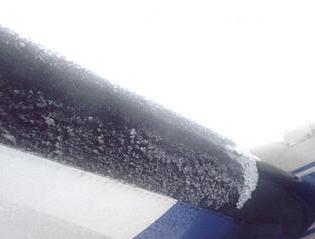|
|||||||||||||||||
|
|
|
|||
|
The Possibilities -
Heatable Paint That Prevents Ice Buildup On Airplanes By Steve Hall |
||||
 |
October 30, 2011 - When it comes to developing new ways
to combat icing on airplanes, there are many existing
methods. But, as Thomas Jefferson once famously said, "I
like the dreams of the future better than the history of
the past." Battelle experts have been hard at work on an
innovative future for reducing or preventing icing on
airplanes using carbon nanotubes.
Battelle's anti-icing technology deploys carbon
nanotubes into the plane's coating, which means it is
lighter than traditional ice protection systems and can
use much less power.
Plus, it's applied using simple painting methods, so it
can be sprayed on a variety of curved surfaces. The key
innovation is how the carbon nanotubes are dispersed
into a coating that goes on with the plane's standard
paint, which then can be heated using available on-board
power. |
|||
|
Battelle's
product is radically different from other ice prevention
systems, such as bleed air (heating the surface with hot engine
air), mechanical boot (physically breaking the bond between
surface and ice) or weeping wing (releasing toxic antifreeze
fluid from the wing). These more traditional solutions can be
too complex, too heavy or draw too much power to be effective,
especially on unmanned aerial vehicles (UAVs), which have both
limited payload capacities and power supplies.
Recent
icing tunnel testing to validate its compatibility with existing
coating systems was promising. Early next year, the technology
will head back to the icing tunnel to further verify the
success. After that, Battelle expects to secure additional
funding to continue the effort towards full operational status
in the next two to three years.
The
program started in January 2010, when Battelle scientists
completed an internally funded research and development project
in which they conducted initial functional feasibility tests of
the coating in an icing tunnel at conditions found in FAA
Regulation 25 Appendix C, "Flight Into Known Icing Conditions."
Success
there led to the conclusion that a carbon nanotube-based coating
was a potential game changing technology one that could provide
an affordable, durable, lightweight anti-icing solution for any
aerial platform that needs it. By March of that year, Battelle
presented the results to government officials, which ultimately
led to a contract to advance the development of the technology
by identifying and addressing potential high-risk issues. |
||||


